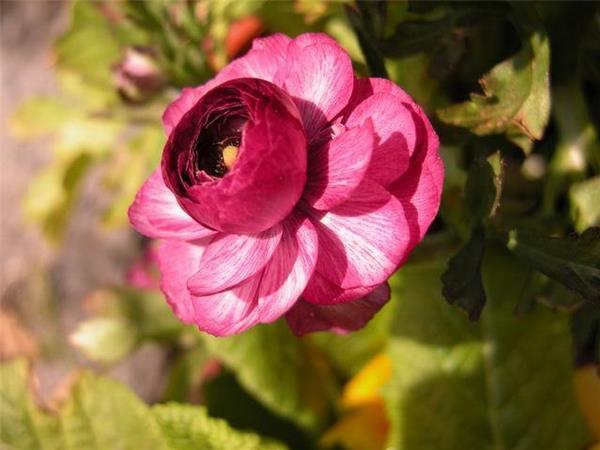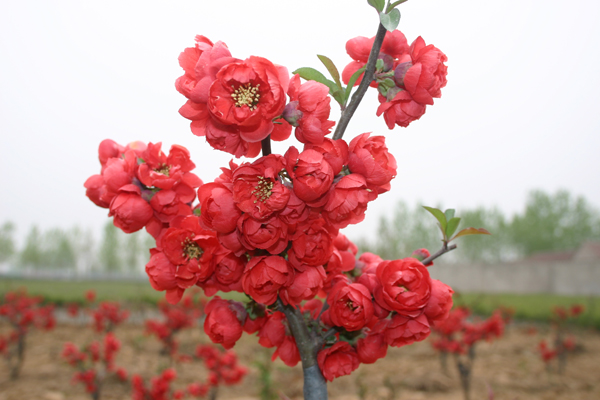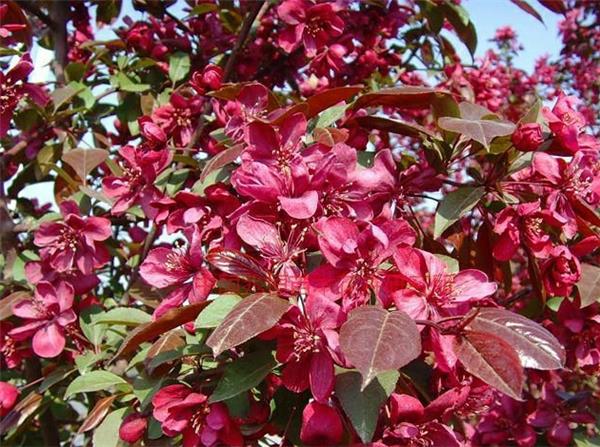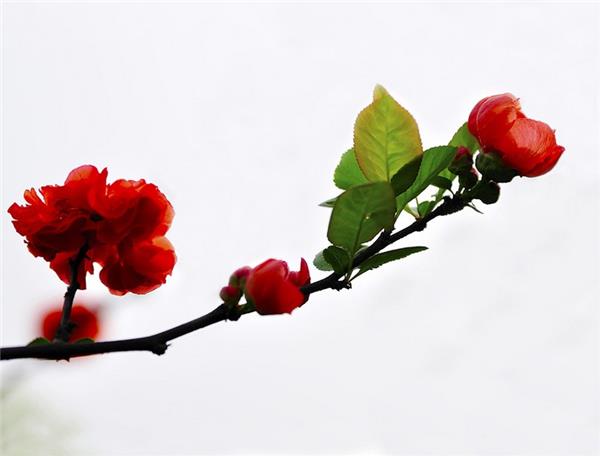Characteristics of Ruby Begonia and Cultivation Methods of Ruby Begonia
Ruby crabapple is a kind of plant with high ornamental value. Ruby is cultivated in the ground. If it is cultured and cared properly, it can thrive and flourish, thus adding a lot of color to our living environment.

Characteristics of red ruby Begonia
1. Good color sense: ruby Begonia presents a red state throughout the growth period, and the red level is distinct. Its new buds are blood red, branches are bright red, leaves are fuchsia, fruits are fuchsia, and flowers are pink. The whole plant has a good sense of color and bright wax.
2. Strong adaptability: Ruby crabapple has strong adaptability and can grow well in barren soil; it can grow vigorously when the pH value is below 8.5; it is also cold-resistant and easy to trim and shape.
3. Easy reproduction: red crabapple is generally propagated by sowing and grafting, and the grafting time is random, either in spring, summer or autumn.
4. Planting is simple: ruby crabapple has strong adaptability, and there are no great requirements for soil, moisture, sunlight, fertilizer, temperature and so on. Generally speaking, as long as it is planted in the soil and handed over some water, it can survive.

Culture method of Red Ruby Begonia
Sprouting: before freezing in late November, choose a place with high terrain and good drainage to dig a pit, 70 meters deep and 80 meters wide, depending on the number of seeds. In early spring, you can sprinkle some water on the seed pile so as not to be too dry. after the soil is thawed, check the temperature and humidity in the pit every week. The temperature in the pit should be kept at 0-5 ℃. From late March to early April, the seeds should be taken out and put into a 20-25 ℃ greenhouse to promote germination. After the seeds are white, they can be sown.
Sowing: use wide and narrow row strip sowing, wide row 60cm, narrow row 30cm, each row covered with 3 60~70cm wide film, every 5~6cm hole in the film, sow 2-3 seeds per hole, and the average sowing amount per mu is about 1.5kg. After sowing, cover the soil with wide 5cm and thick 2cm along the sowing line, and the seedlings will emerge in about a week. Only when the seedling 5~6cm is high can it be watered.
Interseedling: when the seedlings grow 4-5 true leaves in spring, the seedlings that are too dense should be carried out in time, and the seedlings should be replenished at the place where the seedlings are missing and broken. The seedlings were divided into two times when the seedling height was 3~4cm, and the first seedling was carried out when the seedling height was 5~6cm. The seedlings were fixed when the seedling height was 5~6cm, leaving about 15 seedlings per meter and more than 10 000 seedlings per mu.

Watering: after the seedlings come out, when the leaves of the seedlings wilt at noon, they should be watered immediately. After that, irrigation should be done every 10-15 days, and irrigation should be stopped in early September. Irrigate 9-10 times a year.
Fertilization: in the first year of planting, inorganic fertilizer was topdressing in June, applying 50g per tree, digging holes on one side of the tree, and then watering, irrigating water pine once and soil once. In the second year of planting, the inorganic fertilizer was applied twice a year, usually once at the end of May and the middle of July, the amount of fertilizer per tree was about 2030g, and the mature organic fertilizer was applied once before the first intertillage.
Pruning: in the year of planting, it is a slow seedling stage, and the amount of pruning should not be too large. In the second year, the dry and withered branches should be cut off in time, and in order to cultivate backbone branches, four pairs of strong and uniformly branched lateral branches are generally selected as the main branches. excluding the rest of the lateral branches, it is better to be strong and weak at an angle of 40 °- 60 °between the main branch and the central leader, and the main branches should be staggered with each other, and the distance between each pair of main branches in each direction is 30-40 cm. The ratio of crown width to branch height is generally 2 ∶ 1, which makes the whole plant form a conical crown.
Weeding: seedlings transplanted in the same year, combined with irrigation and weeding in time. Generally, the soil should be ploughed in the middle of July to eradicate weeds, keep the soil loose and free from weeds, prevent weeds from competing with seedlings for water and nutrition, and cut off dead branches of seedlings.

Ruby Begonia flowers and colors as brilliant as rubies, with a very high culture value, in addition to the above introduction of soil culture methods, can also be used to cultivate potted plants, used to beautify the indoor environment.
- Prev

Detailed explanation of cultivation, maintenance and function of Eucalyptus dunnei
Detailed explanation of cultivation, maintenance and function of Eucalyptus dunnei
- Next

What are the culture methods and matters needing attention of big flower rose
What are the culture methods and matters needing attention of big flower rose
Related
- Wuhan Hospital Iron Tree Blooming Result Was Instantly Frightened by the Gardener Master
- Which variety of camellia is the most fragrant and best? Which one do you like best?
- What is the small blue coat, the breeding methods and matters needing attention of the succulent plant
- Dormancy time and maintenance management of succulent plants during dormancy
- Minas succulent how to raise, Minas succulent plant pictures
- What are the varieties of winter succulent plants
- How to raise succulent plants in twelve rolls? let's take a look at some experience of breeding twelve rolls.
- Attention should be paid to water control for succulent plants during dormant period (winter and summer)
- Watering experience of twelve rolls of succulent plants
- Techniques for fertilizing succulent plants. An article will let you know how to fertilize succulent plants.

